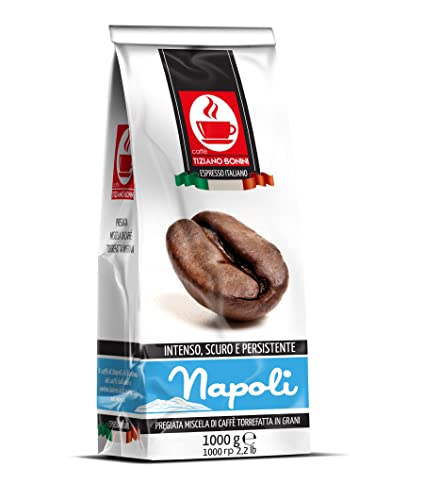Starbucks Coffee Beans 1kg
Before Peppermint Mocha and red holiday cups Before the red holiday cups and peppermint mocha Starbucks was a simple cafe in the rainy Seattle. The company's founders were focused on selling whole bean coffee but they weren't aware of the potential of espresso drinks.
That changed when Schultz came on board. He was determined to showcase his roasting and blending techniques.
Origin
Starbucks coffee beans have a long, winding journey before they reach your cup. Almost all of the world's coffee is produced in a region known as the Coffee Belt, which stretches around the globe between the Tropics of Cancer and Capricorn. The taste of coffee beans is influenced by the climate, soil and the culture of the region. Starbucks sources its coffee beans from more than 30 countries.
Starbucks coffees are mainly produced in Latin America, Africa and Asia-Pacific. These regions are famous for their full-flavor, balanced taste and of acidity and body. Starbucks also gets some of its coffee from the island of St. Helena, a volcanic tropical paradise located in the South Atlantic Ocean.
Starbucks coffee beans are roasted to perfection, resulting in an incredibly smooth and delicious taste. The coffee beans are then ground into a fine powder, that is ready to brew. The powder is then mixed with water and poured into a cup, creating an espresso drink that is delicious. The result is an espresso drink that's full of flavor and energy.
While the majority of Starbucks coffees are blends of different beans, there are a variety of varieties of single-origin coffees available at the stores of the chain. Single-origin Starbucks coffees come in many flavors, such as chocolatey and fruity, sweet and nutty. Certain single-origin beans are certified organic.
Starbucks's beans are sourced from all over the globe, but they must meet certain standards to be considered special. The term "specialty coffee" only came into use in the 1980s, when cafes and roasters started to experiment with lighter roasting, manual techniques, and transparent sources. nescafe coffee 1kg price hasn't started to source their coffee with these standards in mind but has since adopted a few of them.
Starbucks also works to improve the quality of life of those who grow its coffee. It pays its farmers a premium above market prices and helps them invest in their communities. It also encourages sustainability and aims to reduce waste. This has led to the creation of new techniques for coffee cultivation and practices that protect the environment.
Roast
Starbucks roasts beans in large quantities and purchases them in bulk. The process of roasting takes from 10 to 15 minutes and the result is that the beans are dark roast. Dark roasted beans have a rich flavor, and have a full body. The beans are then crushed and delivered to supermarkets and stores in the form of coffee grind. The coffee grind is bitter and not the ideal choice for making the perfect cup. Most people add lots of sugar cream or milk as well as flavorings and whipping cream to their coffee. This will not cover the bitterness of the coffee, but it can make the drink more appealing.
When the beans are dropped into the roaster, they begin to steam due their internal moisture. Then comes the "first crack", an audible sound that indicates when the roasting process has actually begun. At this point the sugars begin to caramelize and bound-up water escapes. During this time, the structure of the beans is broken down and the oils begin to move outward. At the end of this stage, most coffees are deemed to be city roasts.
The beans that have been roasted are cooled and separated from any stones, or other impurities, which may have escaped from the roaster. Then they are checked by hand and then bagged for sale. Some beans have a dark spot, which is known as the quaker. These beans did not change color or taste burned. This is a typical condition and does not necessarily mean that the coffee is bad.
The beans are often roasted in small batches that can be as small as 20 pounds. These are called "micro lots". This is because every coffee is roasted to specifications developed by a group of coffee masters from Starbucks headquarters. The team of coffee experts creates unique profiles that are used by all Starbucks(r) roasting facilities around the world. These profiles help to ensure that each cup of coffee produced will be consistent and have certain levels of body and taste.
Flavor
Starbucks buys their beans from the farm they come from, so that they can improve the quality of their beans and ensure ethical sourcing. For every pound of coffee beans sold, Starbucks plants a tree. The beans themselves are not identified by their origins to show where they originate from, though some of the blends are - Veranda is from Sumatra, Komodo Dragon from Indonesian and Anniversary is a mix of african and central american beans. The flavor profile of these beans is unique and they make a silky velvety cup that has a delicate balance of sweetness and smoothness. Each sip reveals a symphony flavors that leave an enjoyable taste on the palate.
Weight
The weight of starbucks beans 1kg is contingent on the blend. A Starbucks House Blend, for instance, weighs 14 oz per pound. A pound of Espresso-roast beans at Walmart on the other hand, weighs 16 ounces. This translates into a 67% price premium at Starbucks in comparison to Wal-Mart.

Starbucks' Pike Place Roast was named after Seattle's famous market. Its light-medium roast provides balance, sweetness and smoothness in each cup. Made using beans from Latin America, this blend is ideal for Americano and espresso. This premium blend comes in a FlavorLock packaging to ensure the flavor. This is Starbucks' signature coffee. A great choice for all coffee fans! Made of 100 percent Arabica beans. This is a great present for Starbucks lovers.
